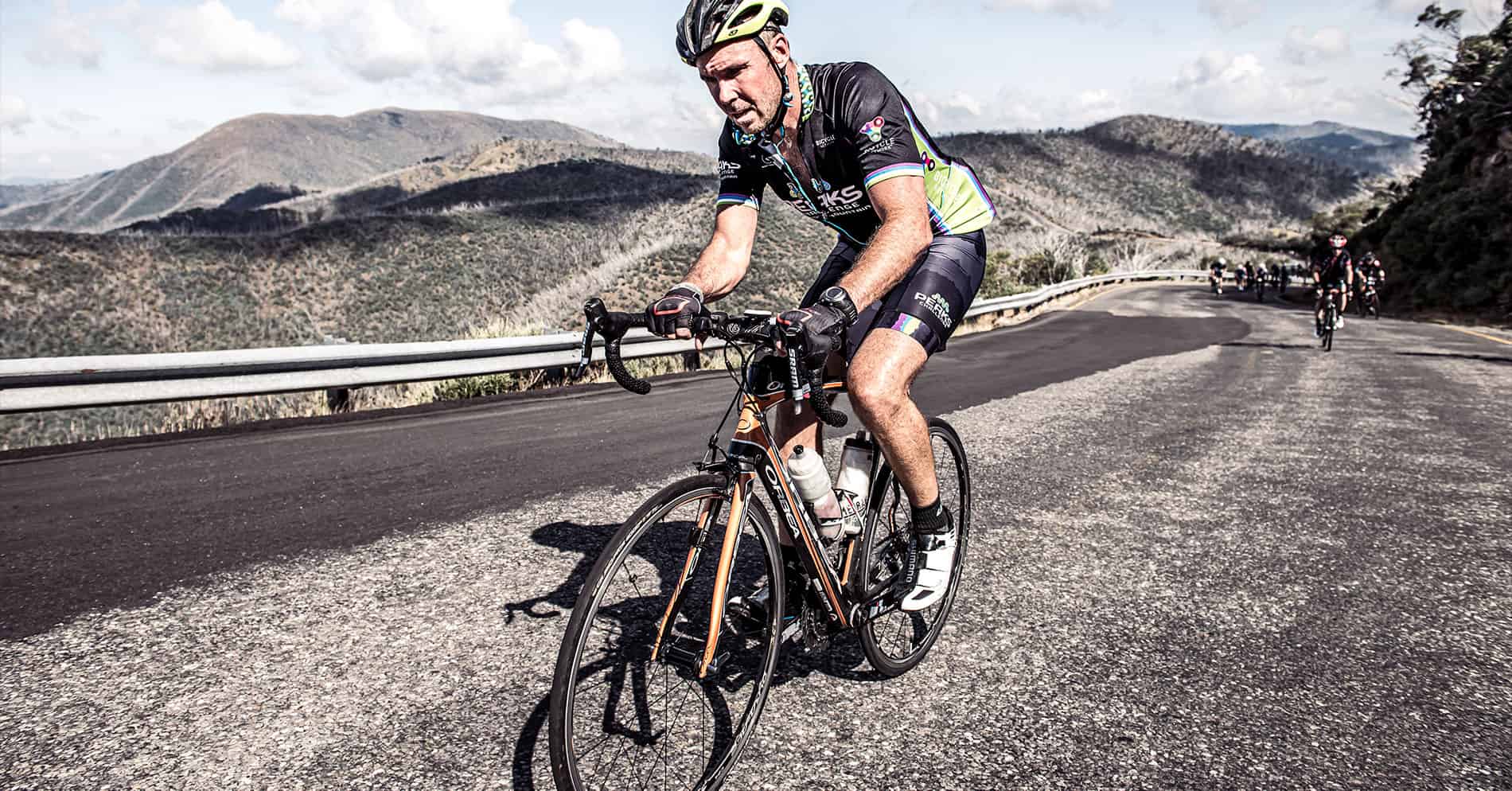In this article, I’m going to be sharing with you how to build your hill climbing strength and aerobic fitness for the Peaks Challenge series events. I’ll also be discussing some of the important training considerations specifically for the Peaks Challenge Falls Creek climbs and providing links to some great training resources.
But before I start, I highly recommend that you read this article on getting started with your training for the Peaks events if you haven’t already.
As I have mentioned before, you’ll need to prepare yourself both physically and mentally for these events. Each of these Peaks Challenge events are massive rides with an epic amount of climbing to rival a Tour De France mountain stage. With the pressure on to finish within 13 hours (or a sub 10 if you want the sub 10 jersey), you’ll need sound climbing legs, excellent aerobic fitness, and a strong mental will to finish.
I’ve been coaching 100’s cyclist for the Peaks Challenge Falls Creek event since its conception. During that time, I’ve been continually refining our training programs and coaching methods to ensure that our training programs are time efficient and effective.
You can download your high-level training plan for the Peaks Challenge Falls Creek that I have developed for you. It will give you an idea of the training commitment for the Peaks Challenge Falls Creek
Check out this article on functional strength training vs traditional muscle isolation exercises
I’ve reviewed plenty of cyclist’s training data before them coming to our coaching programs. It still amazes me how many myths cyclists have about training. It’s sad to see some wasting time on training that is inefficient and in some cases quite damaging their preparation towards these events.
There are many ways to train for this event. So, here are some things that I have learned that are specific for this event. These are the fundamentals “must haves”.
The 80/20 rule – Build cycling strength and aerobic fitness first then your speed
Contrary to popular belief that High-Intensity Interval Training is the Holy Grail to solving every training problem, it’s not the case. While High-Intensity Interval is still important, remember that improvements from HIIT training are gained quickly but lost quickly, and there is a limitation to how far you can develop your fitness with it.
Your training plan should be built around 80% low-intensity strength and aerobic training and 20% interval training. These percentages change as you work through your training plan focusing on building your aerobic capacity and strength early on in the program and introducing speed work in the final weeks leading up to the event.
Do low cadence strength and off the bike strength training early on in your program to build hill climbing strength
This is particularly important for the Peaks Challenge Falls Creek ride because of the sustained climbing on the three major climbs. Many cyclists report cramping at this event, and I believe that much of it is to do with long periods of driving the bike at low cadences. Strength is developed slowly and lost slowly so you can build it early on in your program. Once built you only need to do a little strength work later on in your program to maintain it while you are working on your hill climbing speed training.
Extended five, ten and twenty minute E3 intervals (see this article for heart rate and this article for power) on the home trainer at lower cadences of fifty, sixty and seventy rpm or hill repeats of the same duration and rpm over different gradients out on the road are ideal. If you don’t have any long climbs, then find a stiff head wind and drive into it in your preferred hill climbing position.
On the weekends spend as much time climbing hills as you can either at E1 or E3, mixing it up over different gradients and lengths of climbs.
Off the bike strength training should be focused on developing sustained power for hill climbing rather than explosive power for sprinting. You can work with your personal trainer to develop a program or use our off the bike strength training program that’s included in our PCFC detailed training program with coaching support service.
Building aerobic capacity
Your aerobic capacity is like your strength training; it’s built slowly and lost slowly, and you only need to top it up to maintain it once you have it.
This riding is done at E1 and E3 roughly following the 80/20 rule.
Again, the bulk of your aerobic base training is done early on in your training with a progressive build as you work through your program. I recommend that the much of it is done during the weekend when you have more time to train. If you are a shift worker, you’ll want to do this training back to back on the two consecutive days that you have off work.
Our free Peaks Challenge Falls Creek high-level cycle training program will give you a guide as to the build you require for both a sub 13 and sub 10 ride. The remaining base training is done in your recovery rides at E1 and preferably at higher cadences of around 90-100 rpm on flat courses.
To help you build up your plan, download our typical week of training for the Peaks Challenge Falls Creek which is a sample of our PCFC detailed training program with coaching support service available as part of our coaching membership.
I hope that this has provided some insight and resources to help you prepare for your Peaks Challenge Falls Creek ride and will help you map out your season planner and training schedule.
Remember that you will be investing a lot of time and money in your build up to the Peaks Challenge Falls Creek event as well as your ride entry and accommodation. Take the guesswork out of your training, get your proven detailed training program, specific indoor training videos and coaching support for your Peaks Challenge Falls Creek ride by signing up for our affordable coaching package and join our team training for the event. Training has already started.
Check out this article about To Climb Faster You Need To Build Strength Before Speed.






Leave A Comment